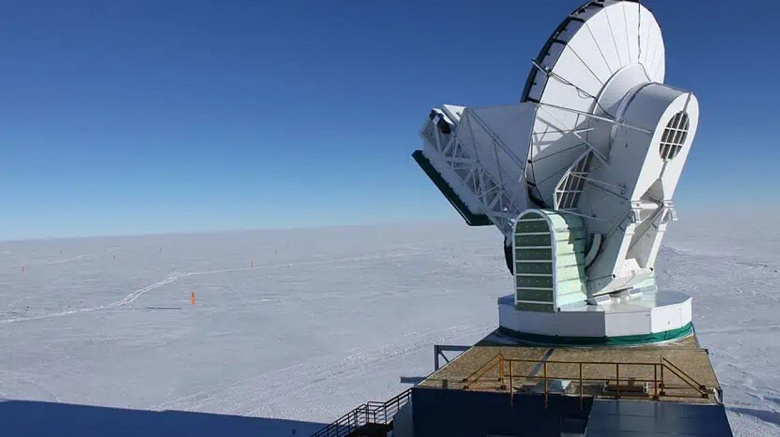SPT sheds light on gravitational lensing and confirms Einstein's theory of relativity
At the Amundsen-Scott South Pole Station, located in Antarctica, there is a 10-meter radio telescope SPT (South Pole Telescope), designed to study the mysterious hum of microwave light in the Universe, left after the Big Bang . The main goal of this space instrument — decipher «echo» the largest event in the history of the Universe and confirm or refute fundamental principles, including the foundations of Einstein's general theory of relativity.
Throughout their research, scientists have not discovered any facts that would violate the basics of physics, which means that Einstein’s teachings remain valid. The obtained data on lensing — the process of distortion of light as it propagates through space are in good agreement with predictions made on the basis of the general theory of relativity.
«We have concluded that the lensing patterns observed and studied in this study are, in fact, the embodiment of the basic principles of general relativity», — emphasized Zhaodi Pan, a researcher at Argonne National Laboratory, part of the US Department of Energy. «This circumstance confirms the importance and relevance of our existing understanding of gravity at large-scale spatiotemporal levels. In addition, the results strengthen our concept of how the structures of matter form in our Universe».
The telescope underwent an upgrade in 2017, which resulted in the installation of the latest SPT-3G camera with 16,000 detectors. The main purpose of this camera is to measure the cosmic microwave background (CMB), which is residual radiation important for an extremely detailed study of the early stages of the development of the Universe.
«CMB», —is of great importance for cosmologists. Pan explained. «Slight changes in the temperature and polarization of this background offer us a unique opportunity to penetrate into the depths of the origin of the Universe».
At the same time, special attention was paid to gravitational lensing — the phenomenon of distortion of light caused by the influence of massive objects, such as black holes and giant galaxies, on its path from the source to the observer. This phenomenon is an integral part of Einstein's general theory of relativity. The current study only analyzed data going back to 2018, but the scientists found that when studying large parts of the southern sky, the rate of gravitational lensing was consistent with the predictions of general relativity.
«One of the most exciting aspects of this study is that the results obtained are based on data collected during the initial period of work with the SPT-3G camera. And even with this equipment, our results are impressive», — noted Amy Bender, a physicist at Argonne National Laboratory. «We also have a five-year supply of data that we are currently working on analyzing, so this is just a harbinger of what lies ahead.».

